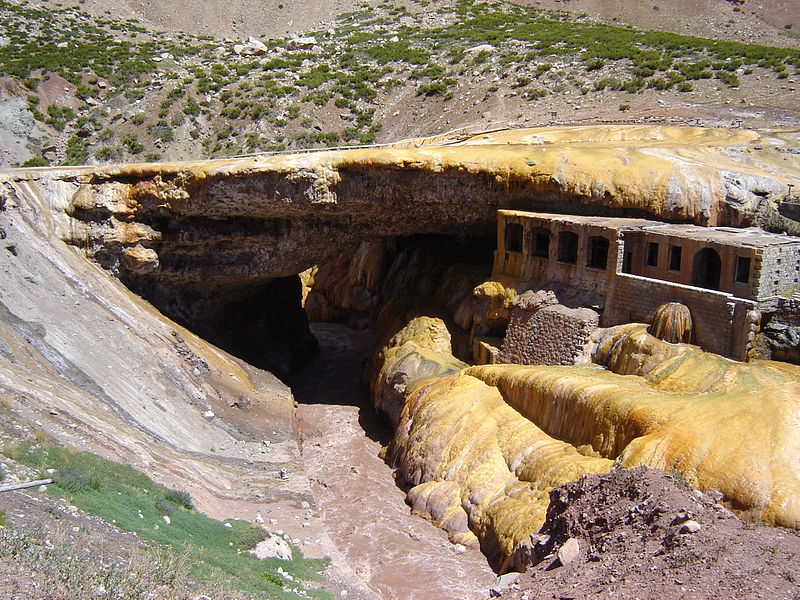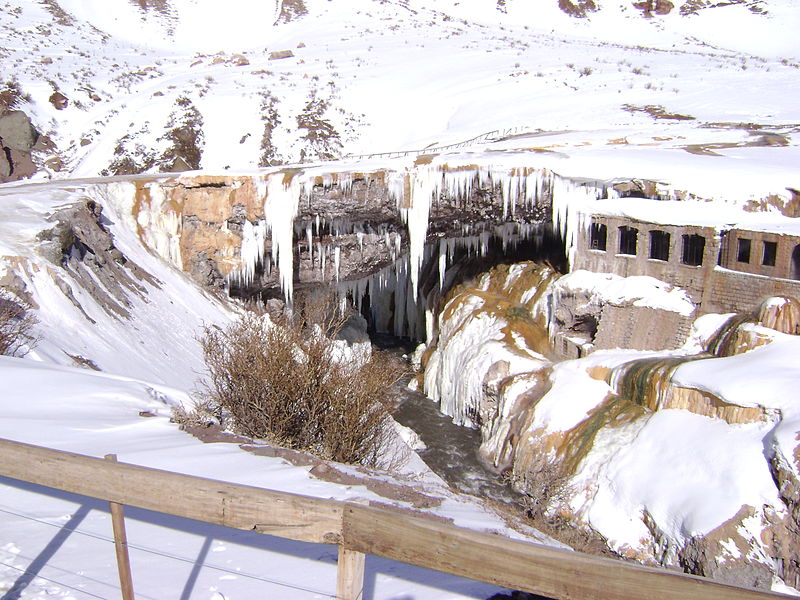 There are plenty of amazing things to do and sights to see in Argentina. If you find yourself studying Spanish in Mendoza, consider a day trip to the Puente del Inca.
There are plenty of amazing things to do and sights to see in Argentina. If you find yourself studying Spanish in Mendoza, consider a day trip to the Puente del Inca.
This popular tourist attraction comes with the typical roadside market stands hawking all kinds of souvenirs, as well as some truly unique features.
The name “Puente del Inca” refers to the 70-foot-long natural rock bridge that crosses over the Cuevas River at a height of 69 feet. There are two explanations for how the rock bridge formed. Geologists believe that there used to be a glacier here. As time passed, sediments laid down on top of the glacier turned to rock. When the glacier melted, the rock bridge was left behind.
The more interesting explanation comes from an Incan legend. Long before the Spanish came to South America, there was a great Incan chief who had a paralyzed son. He had tried many cures for his son, but nothing worked. Eventually he heard that to the south there was a place with healing waters that could save his son and end his family’s disgrace. Taking a group of his finest warriors with him, he departed for the high peaks immediately. When the chief arrived, he marveled at the hot waters that sprung from the earth. However, between him and the spring there was a mighty rushing river that blocked his path completely. His warriors quickly formed a human chain across the river, making a bridge for the Inca chief. The chief carried his son across the river and placed him in the healing spring waters. The son was cured, but when the chief turned to thank his warriors, he saw that they had turned to stone. And so the famous Puente del Inca was formed.
Whether or not you believe the legend, the bridge was definitely used by Incan travelers in ancient times. Beneath the bridge, you will see the remains of a fashionable hotel built in 1925 to allow the upper crust of Argentine society to partake of the healing spring waters. Each of the hotel’s rooms had its own thermal bath, with water piped directly from the springs.
The hotel was destroyed by a flood in the 1960s, and the thermal waters are not as hot as they once were, but you can still enjoy exploring the fascinating site of the Puente del Inca. The surrounding rock is a vibrant yellow color due to sulfur content, and there are pleasant mountain views. In winter, the site is frosted with snow and dripping with fantastic icicles.
